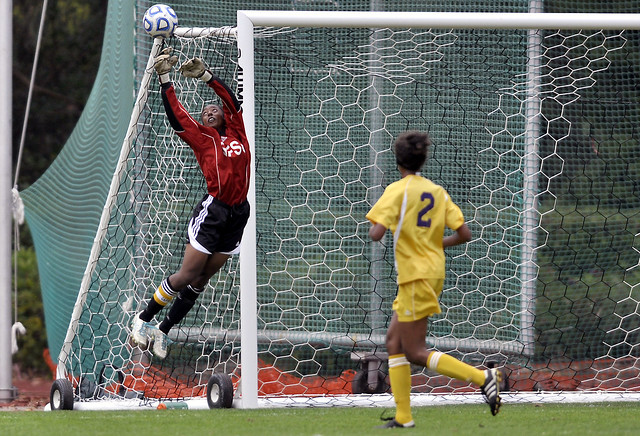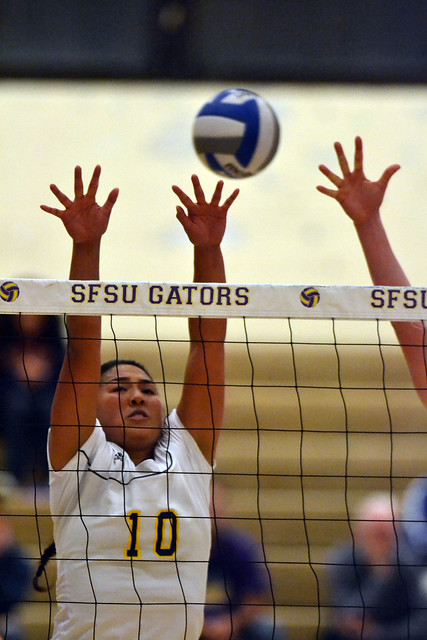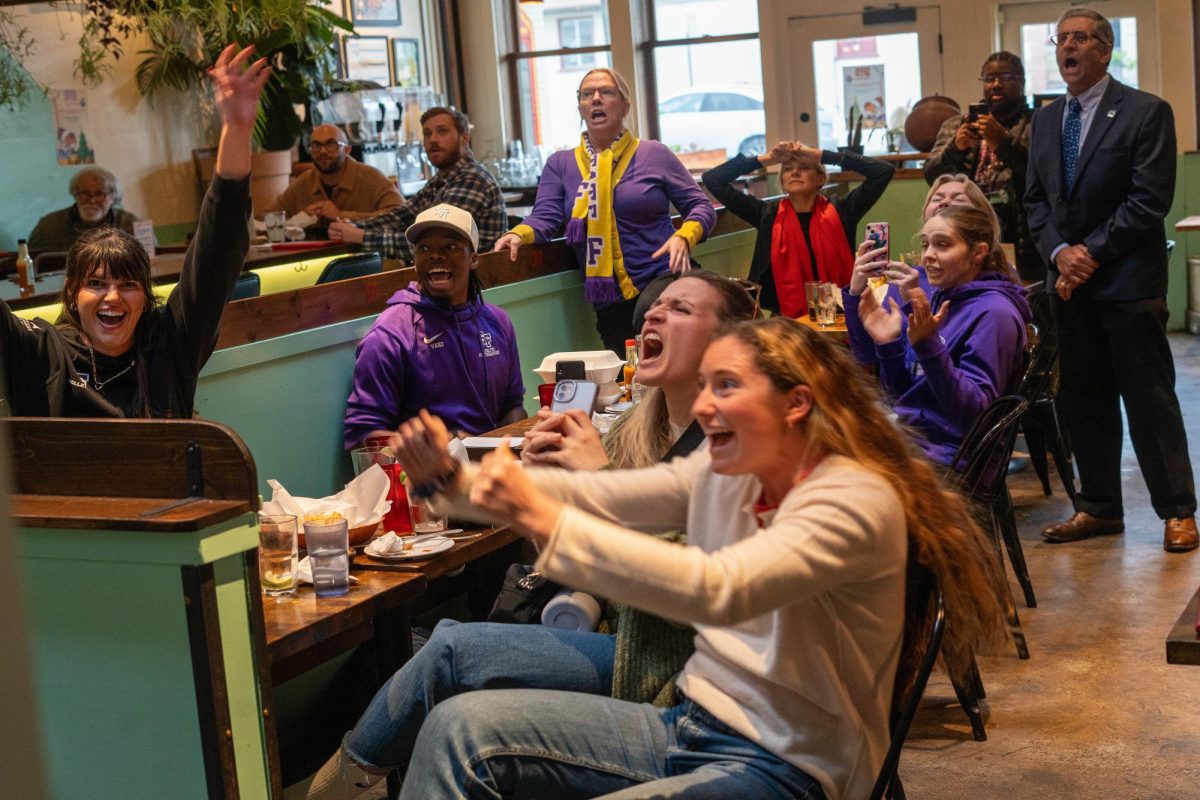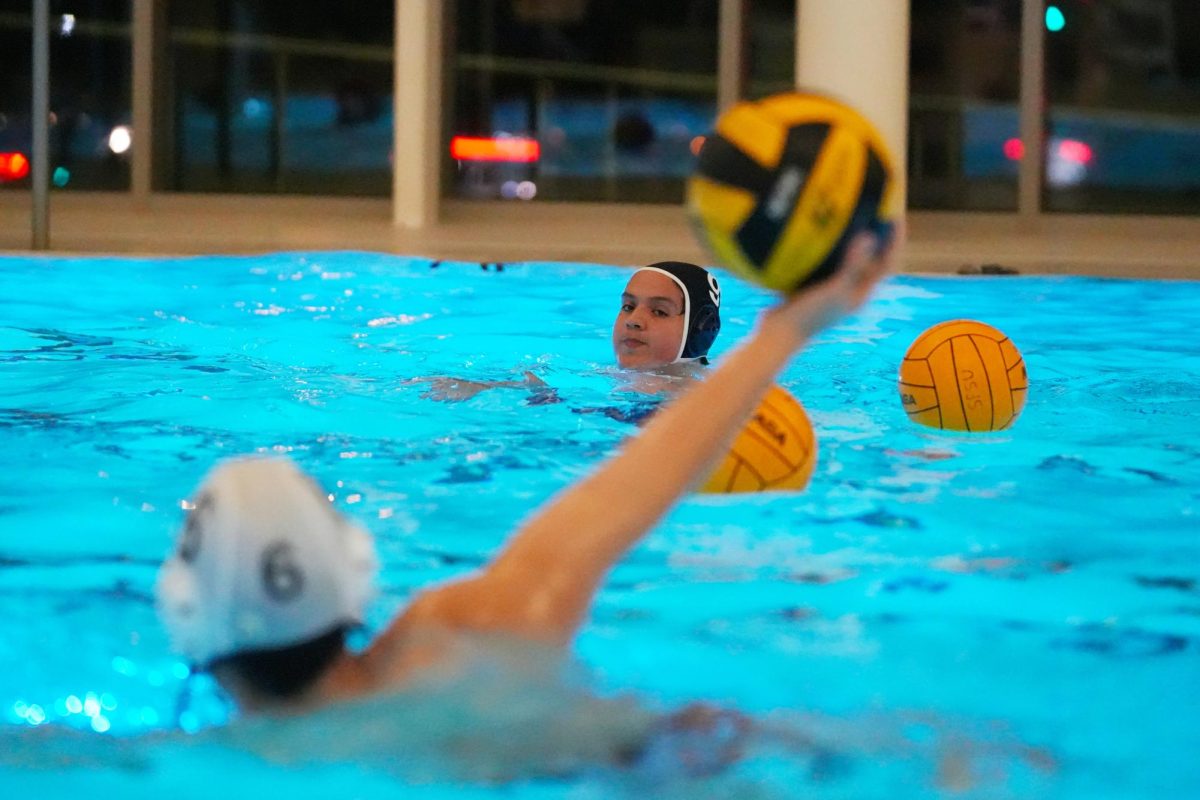
Running at full speed, the opposing team’s forwards advance toward the goal, flawlessly weaving around defenders. As the final seconds of the game wind down, a forward takes her last shot attempt. In a fit of overwhelming adrenaline, the goalie leaps at precisely the right time to seize the soaring soccer ball, sealing her team’s victory with a heap of satisfaction.
Annicia Jones, kinesiology major and senior goalkeeper for the SF State women’s soccer team, is making it her goal to support other people in the same way her physical education teacher positively influenced her outlook on helping others through sports.
“I had a great experience growing up with my P.E. teacher and that has just carried on to the rest of my life,” she said. “(And now) I kind of want to help others out the way P.E. has helped me out.”
Jones is on her way toward her ultimate ambition: running her own soccer camp. She works as an assistant teacher to the lead physical education teacher at Monroe Elementary School. After graduation, Jones plans to coach soccer while getting her credential to teach physical education.

Thirty-one of 187 student athletes are majoring in kinesiology, the study of human movement, putting it among the most popular majors for SF State’s athletes.
According to Academic Coordinator David Woo, who has been counseling students in the athletic department for eight years, kinesiology has always been one of the more favored majors among the athletes.
“I don’t have the actual breakdowns year by year, but since I’ve been here, kinesiology has probably been the first or second most popular major with student athletes, usually flip-flopping with business administration, which I think is SFSU’s most popular major,” Woo said.
As for the other athletes, 16 are in business-related majors, 14 of them are communications majors while 11 others have declared criminal justice or biology as their main areas of study. The rest are divided among 37 different majors.
Maria Veri, an SF State kinesiology professor who focuses on social and cultural studies of sport and movement, said the large number of student athletes studying the major is not surprising.
“I think that’s something that’s common at universities where you have some kind of kinesiology or exercise science department and we also have an athletic department,” she said. “It’s a good match.”
Kinesiology covers a broad range of topics like social science, fitness and physical activity, neuro-muscular science, biomechanics, motor development and motor learning, and youth development, according to Veri. Although the department focuses on more than just sports, she thinks it’s beneficial to have some firsthand experience.
“I think (having a background in sports) broadens their perspective,” she said. “I would argue that it helps them understand their experiences more from a multitude of perspectives.”
Melissa Horton, a 19-year-old sophomore on the volleyball team, said she also wants to become a physical therapist not only because she wants to help other athletes recover, but because of her interests in the physical and emotional recovery process.
“I like being with people and helping people,” she said. “Being a positive impact (and) helping people on a daily basis with improving their well-being is an interest of mine.”
After spending six months recovering from a torn labrum in right shoulder during her sophomore year in high school, Horton said her biggest inspiration during the whole process came from her athletic trainer.
Horton plans to earn her doctorate at graduate school after graduating from SF State. She also looks forward to becoming an assistant in a physical therapy office to get her foot in the door.
According to department chair Mi-Sook Kim, kinesiology is an integrative area of study, combining elements of social science, basic science, applied science and biomechanics to learn about movement. Because of their varied expertise, kinesiology majors aren’t limited to jobs in coaching. Athletic training, physical therapy, exercise leadership, fitness program management and sports media are all available employment options.
“Often athletes are interested in learning themselves how to move better – perfect their technique – and often they’re interested in helping others,” said Bob Schleihauf, who has been a professor in SF State’s kinesiology department for 17 years.
Senior volleyball player Iris Tolenada is one of those athletes. The 21-year-old said she chose the major because she likes learning about the human body and working with other people.
“I’ve also injured myself, so going through (physical therapy) and having my trainer help me through it just inspires me to help other people as well,” she said.
Tolenada said she wants to apply for physical therapy programs after graduating from the University and hopes to volunteer at a hospital or clinic for experience.
While playing sports professionally is considered an option for college athletes, not all are following that path.
Although she’d like to play soccer for the rest of her life, Mari Mendizabal, a junior kinesiology major and defender on the Gator women’s soccer team, said it’s not in her career plans.
“My body can only take so much!” she said. “I could play recreational (soccer), but to make it a career, it’s too competitive and too time-consuming.”
Mendizabal said she plans to become a physical therapist to help athletes recover from injuries and get back on the playing field.
SF State athletics alumna Monica Amburgey understands the importance of keeping options open. A former softball athlete who graduated in December 2010 with a kinesiology degree, Amburgey moved to Monterey to gain experience working at a physical therapy clinic while applying for physical therapy school.
“I liked working with post-op patients best because the progression of their recovery was inspiring,” she said. “I saw firsthand how (physical therapy) decreased their pain and increased their range of motion.”
However, she was not accepted at the physical therapy on her first try. She now works at a restaurant while taking classes to become a certified nurse’s assistant in order to keep her career options open.
Although the passion and ambition is high for these athletes, Amburgey said academics should still be the number one priority over game play.
“Get good grades!” she said. “Especially in your upper division science classes like chem, physics, anatomy and physiology. (Physical therapy) is very competitive, and your extra curricular activities are not important to those reading grad applications.”






